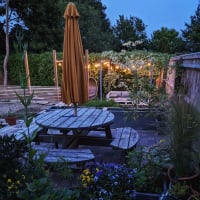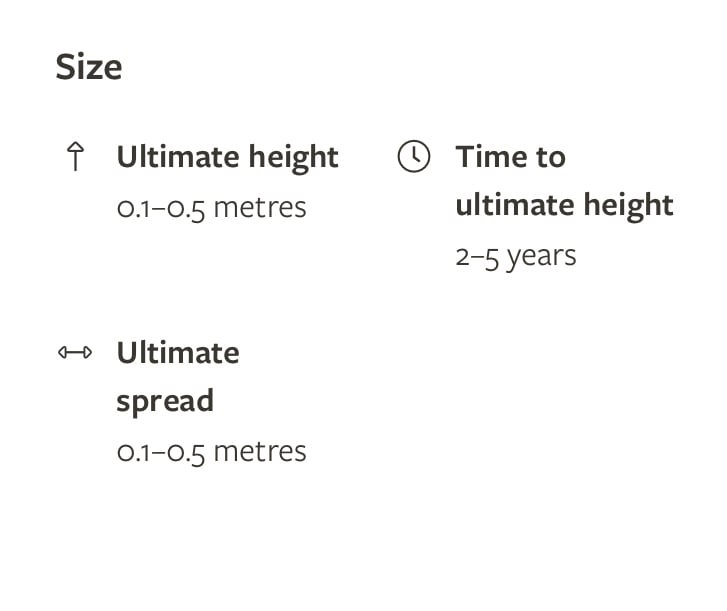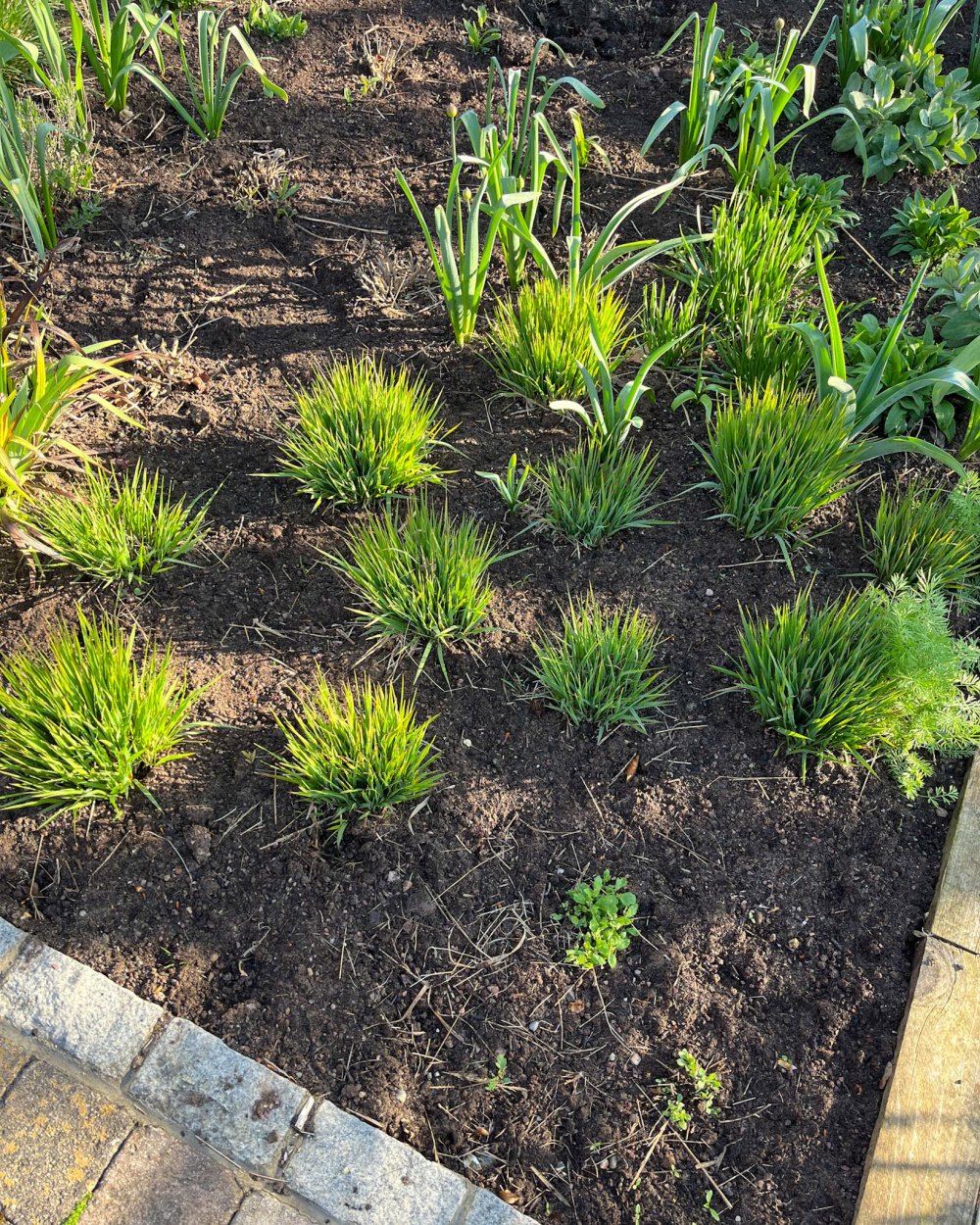This Forum will close on Wednesday 27 March, 2024. Please refer to the announcement on the Discussions page for further detail.
Plant spacing and gaps
 Latimer
Posts: 1,068
Latimer
Posts: 1,068
Hi all
I’m a little confused when it comes to plant spacing and the sizes of plants when you look up details online and then how to use that information to plants out things correctly. And as a part, what to do if things don’t work out as expected.

I’m a little confused when it comes to plant spacing and the sizes of plants when you look up details online and then how to use that information to plants out things correctly. And as a part, what to do if things don’t work out as expected.
So here is an example from my garden:


The grasses planted here is:
Molinia caerulea subsp. caerulea 'Moorhexe'

These are the details from the rhs website.
So, looking at this, I think I allowed 30-50cm spacing between the plants (or I think about 8-9 plants per square meter) to allow them to grow to their potential size. However, it seems to me that the 50cm spread they mention is probably at the top of the plant, where it’s much wider than at the base.
My questions, I suppose, are:
Should i be planting much closer together than the spread suggests in general, not just in this specific example? Or is it hard to generalise and is it very plant specific?
If it is, as I suspect, plant specific, what is the info I should really be looking at to understand how far apart to plant?
And finally, in this specific example, what would you do? Move them all much closer together so they are almost touching or plant a ground cover type to go between them?
Should i be planting much closer together than the spread suggests in general, not just in this specific example? Or is it hard to generalise and is it very plant specific?
If it is, as I suspect, plant specific, what is the info I should really be looking at to understand how far apart to plant?
And finally, in this specific example, what would you do? Move them all much closer together so they are almost touching or plant a ground cover type to go between them?
I don’t like seeing the soil, I like the idea of a packed garden with plants tightly intermingled with each other. Even once we hit full summer, this area never really looks full and you can always see the soil as the grasses are so “see through”.
Thanks in advance and once again, sorry for the long rambling post!
I’ve no idea what I’m doing.
0
Posts
They will be wider at the top and I think they will grow into each other.
If they've only been recently planted and you don't like bare ground [I'm the same] it's better to stick some annuals in, or if you already have groundcover plants that you can split and put in, that would be fine. if they don't survive being so close to the grasses, it hasn't cost anything other than time.
I'm guessing from your post the grasses have been in longer though, in which case it might be worth finding some upright perennials to mix in. What those would be will again depend on your site and climate etc. Things like Liatris would be good though - purples and whites, which would work well with your grasses, and the alliums I can see in your pic.
I live in west central Scotland - not where that photo is...
I don’t think there is a magic number as there are so many variables. The range given says it all as there is a huge difference between a spread of 10cm vs. 50! As you’ve said it’s not always clear what the spread/height refers to. I often wish they would give the non-flowering height as well as the in flower, as that information would be very useful.
Matt James in his book the urban gardener gives a guide he uses as rule of thumb. From memory he suggests 7 per sq. metre for grasses.
East facing, top of a hill clay-loam, cultivated for centuries (7 years by me). Birmingham
It looks best as a monocultural block, without mixing in perennials IMO, but you could have low spring bulbs/ephemerals between the emerging leaves. There's nothing to stop you increasing the density though. The Knoll Gardens suggested density seems low for this grass, I would be thinking along the lines of at least 9 per m2 on a new planting scheme. It also might be worth moving it back off the corner as it's particularly prominent there.
I agree if you grow grasses and inparticular Molinias which can be later to leaf, bare soil now is what you have. Plants that are at their best later in the season are often doing little at all at the moment. Nearby you need plants that are of interest in spring.
They will cross when in flower and with Moorhexe you need to admire it as a smoky haze from a distance, up close admire just how delicate the flowers are too.
I love to see them with dark reds and deep pinks and Ophiopogon which is evergreen.
Grass heights can vary according to growing conditions and if you have space I would add Calamagrostis Karl Foerster at some point. Just one plant as it will soon bulk uo
I think I do need to make some changes to the beds. I think I looked at this before and almost everything I have is at it's best late summer/autumn, so I end up with a long period of bare soil.
@Fairygirl they have been in the ground for around 4 years now so I can't see them getting much bigger.
@Loxley @GardenerSuze @JennyJ I definitely need to add a lot more bulbs, it's the one part I have been lazy about and it would probably help a lot. I'm not sure how to do it practically though, when you have a bed full of perennials in October that you want to leave over winter for the seedheads, how do you get to the ground to plant the bulbs? Last year I threw a load of alliums to plant in randomly and within 5 minutes I couldn't find half of them!
@JennyJ that is a interesting picture, thanks for sharing it. One of the hardest things I find is that magazines and books are all about the plants at their best, I'm yet to find a good resource that follows a garden through the year so you can see all the stages.